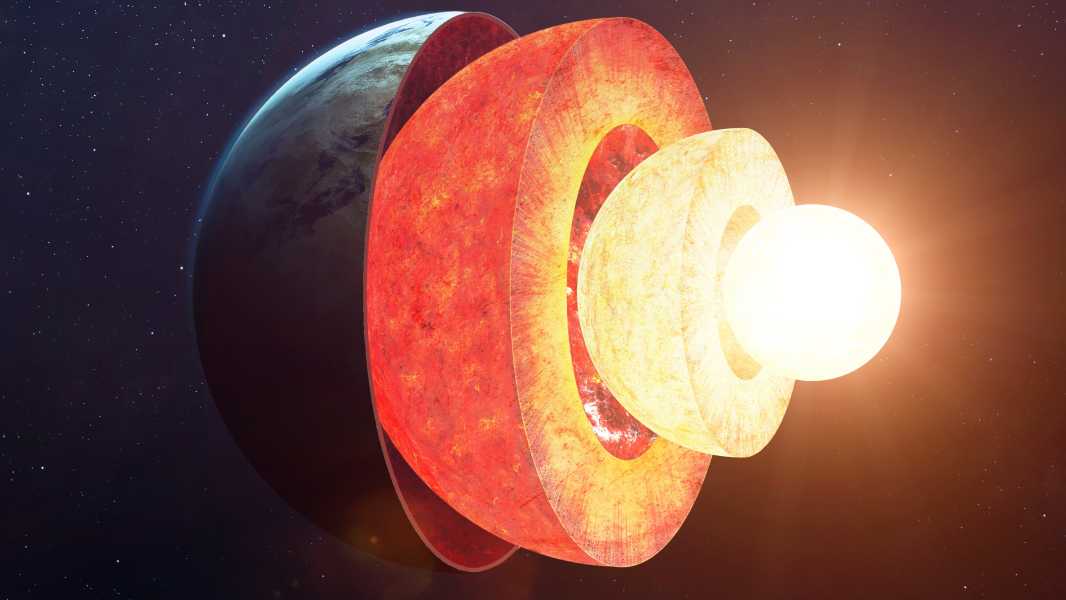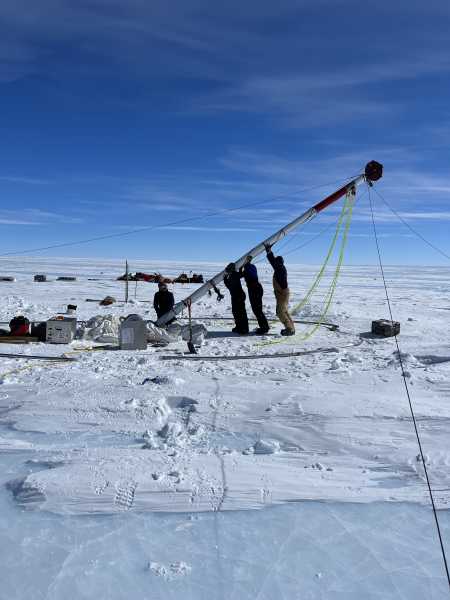
The Earth's core rotates at variable speeds, and scientists have now discovered that its shape can change too. (Image credit: forplayday/Getty Images)
New research suggests that the surface of the Earth's inner core may be changing shape.
A study published Feb. 10 in the journal Nature analyzed earthquake waves that passed along the edge of the inner core at a depth of 3,200 miles (5,150 kilometers). It showed that even when the core rotated to a previously fixed position, there were often subtle differences.
These differences indicate that the surface of the inner core, although solid, can change significantly over short periods of time.
“It's likely that the flow in the outer core is stirring up the outer part of the inner core a little bit and changing its topography,” said John Vidale, the study's leader and a seismologist at the University of Southern California, Dornsife.
The outer core is made of molten metal, mostly iron and nickel. It “softens” the solid inner core, which is also mostly iron and nickel. Each year, a small portion of the liquid outer core crystallizes and is added to the solid inner core, which grows by about a millimeter per year.
However, at the boundary between the outer and inner cores, the inner core wobbles right around its melting point. It’s solid, but not rigid. That’s probably why it warps a little in the new study, though pinpointing the exact size of the shape changes is challenging, Vidale told Live Science.
“We suspect the movement could be hundreds of meters, maybe even a kilometer or two,” he said, “and we don't know how wide it will be. It could be hundreds of kilometers across.”
In an earlier study that Vidale co-authored, he and his colleagues found that the inner core does not rotate at a constant speed. It rotated faster than the rest of the planet until about 2010, when it began to slow down. Now it lags behind Earth's overall rotation.
With this research, scientists were able to determine when the same point on the core passed under the same point on Earth between 1991 and 2023. To analyze the core, they used pairs of earthquakes that occurred at the same location in the South Sandwich Islands in the South Atlantic Ocean and generated waves that passed through the core before being picked up by receivers in South and North America.
Using 168 pairs of these earthquakes, the researchers noticed small changes in the waves that passed through the same place in the core at different times as those waves penetrated the core. However, they also detected changes in the same places in the waves that just brushed the surface of the core, which sheds light on its outer layer.
Exploration of the Earth's Inner Core
Since the first studies of the inner core in the 1990s found evidence of motion, there has been debate about whether the inner core rotates or simply experiences some shifts at its boundary, said Bruce Buffett, a geologist at the University of California, Berkeley, who was not involved in the study. “Everyone may be right a little bit,” Buffett told Live Science.
The distinction may seem largely theoretical, Buffett noted, but the solidification of the inner core is the primary driver of heat movement in the liquid outer core, which creates the planet’s magnetic field. No one knows when the inner core began to solidify or how the magnetic field functioned before it solidified. “We hope to be able to use the texture of the inner core, its structure and dynamics, to figure out something about the history of the dynamics of the deepest part of the planet,” Buffett added.
There are many hypotheses about what might be perturbing the inner core. These ideas include gas-emitting “volcanoes” and underground landslides, Vidale said. But the most likely option for Vidale is that
Sourse: www.livescience.com





